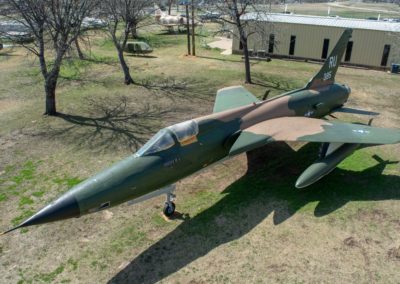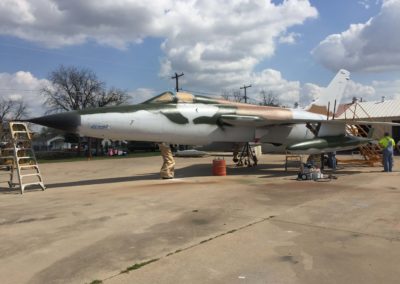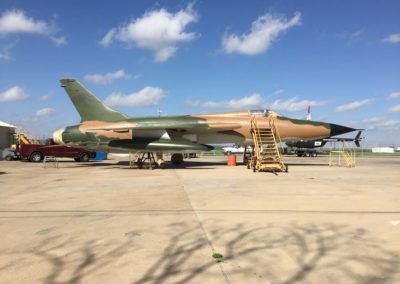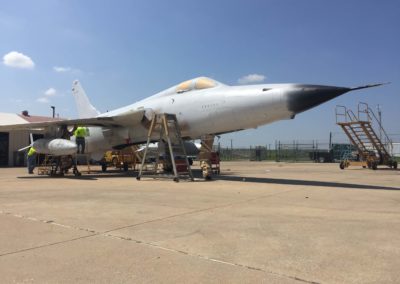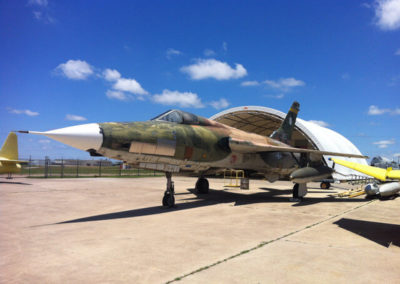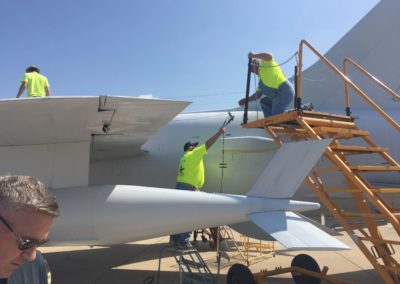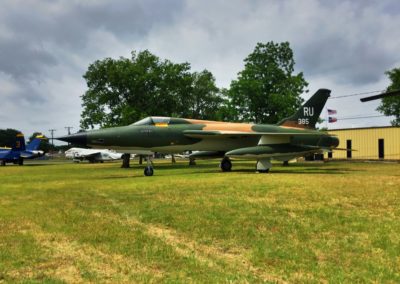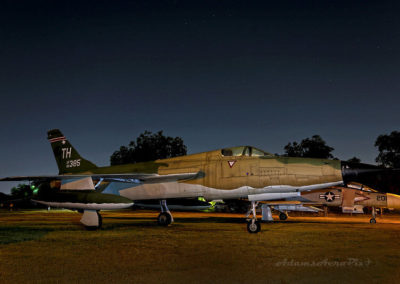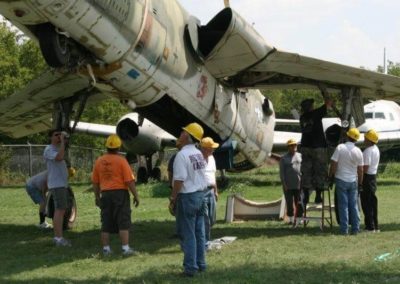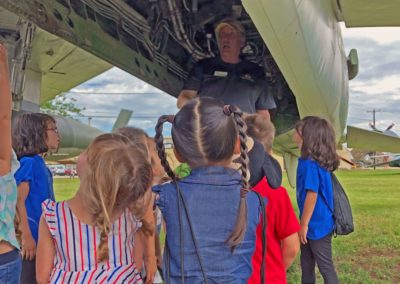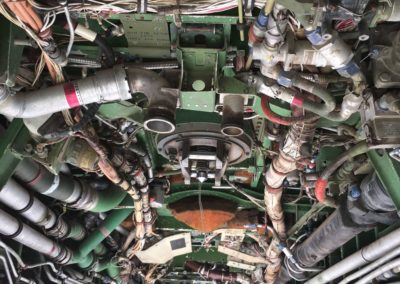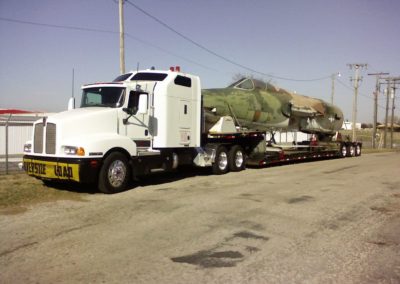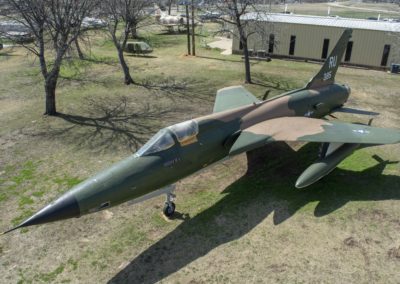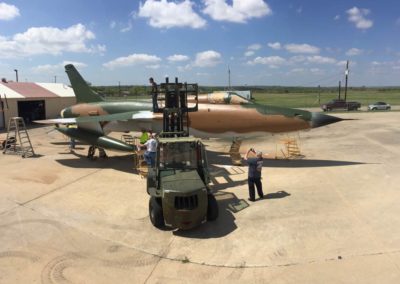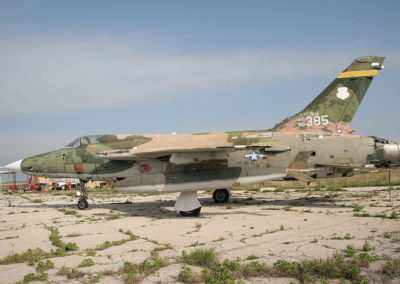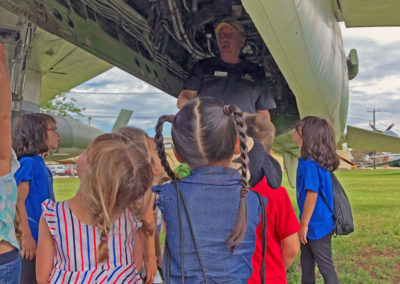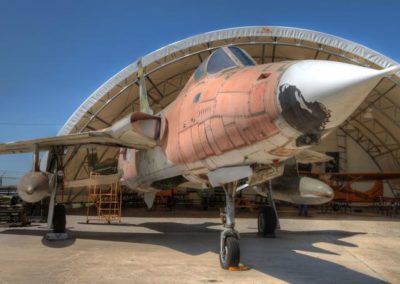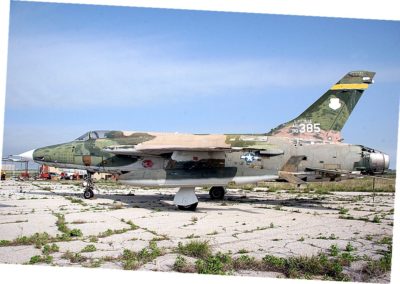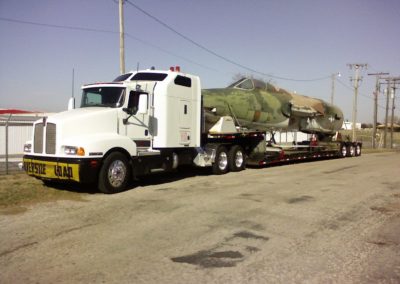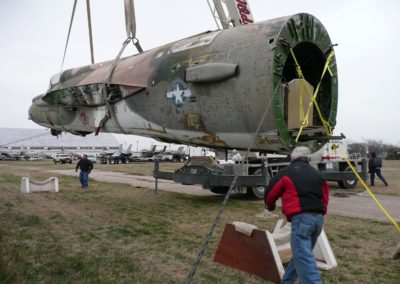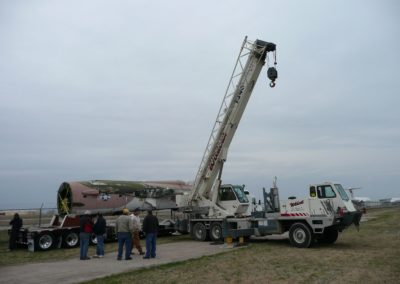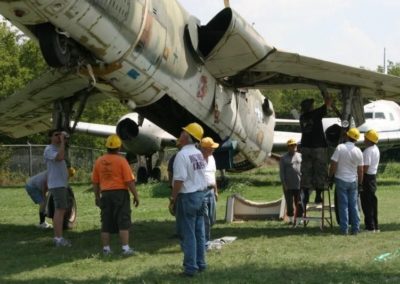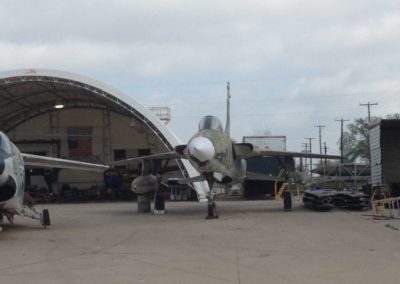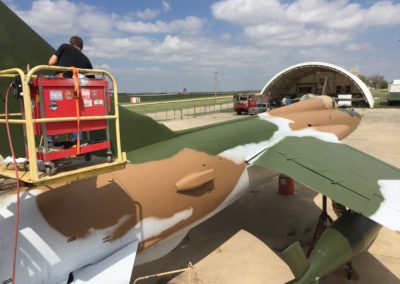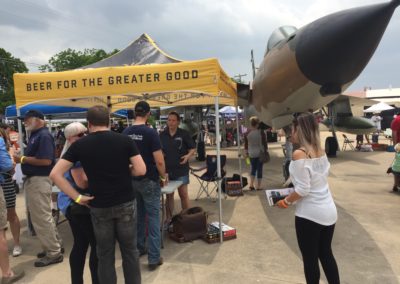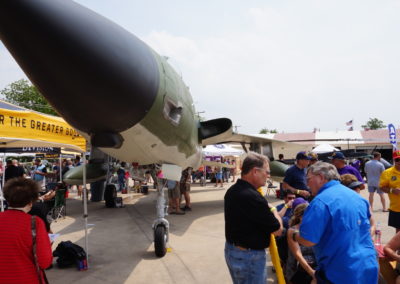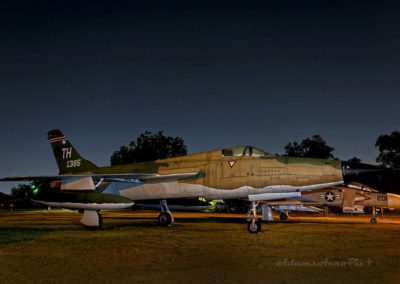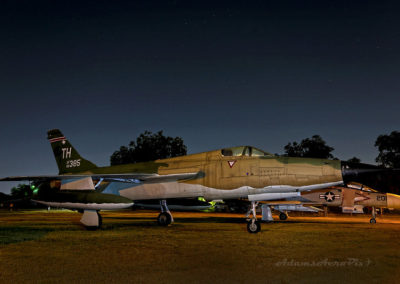F-105D Thunderchief
This aircraft has a distinguished history, with Air Force squadrons in the 23rd and 36th Tactical Fighter Wings and the Virginia Air National Guard. It also appears this aircraft survived the Ho Chi Minh Trail flying from Korat Royal Thailand Air Force Base in Southeast Asia.
Warbird Overview
This aircraft has a distinguished history, with Air Force squadrons in the 23rd and 36th Tactical Fighter Wings and the Virginia Air National Guard. It also appears this aircraft survived the Ho Chi Minh Trail flying from Korat Royal Thailand Air Force Base in Southeast Asia.
ABOUT THE F-105D THUNDERCHIEF
This aircraft has a distinguished history, with Air Force squadrons in the 23rd and 36th Tactical Fighter Wings and the Virginia Air National Guard. It also appears this aircraft survived the Ho Chi Minh Trail flying from Korat Royal Thailand Air Force Base in Southeast Asia.
In 1951, Republic Aviation began a project to develop a supersonic tactical fighter-bomber to replace the F-84. The result was the F-105 Thunderchief, later affectionately nicknamed the “Thud.” The prototype YF-105A first flew on October 22, 1955, but the first F-105D did not fly until June 9, 1959. F-105s were produced in the single-seat B and D models, and also in two-seat F and G models. Some of the 143 F-models were modified to become electronic warfare aircraft with radar jamming and homing equipment and the missile to shoot back at SAM missile radar sites. A version with more advanced electronics became the F-105G. These latter 105s became known as “Wild Weasels” after the animal that would chase a predator into its own den. A total of 833 Thunderchiefs of all types were built, including 610 F-105Ds.The F-105 could carry over 12,000 pounds of ordnance, a heavier bomb load than a World War II B-17. Interestingly, the B-17 was only 10 feet shorter than the F-105. The F-105 could carry up to 8,000 pounds or ordnance internally in the bomb bay. The F-105s were used extensively in the Vietnam War. They cumulatively flew over 20,000 missions against North Vietnam with half the aircraft being lost. The last F-105D was withdrawn from USAF service on July 12, 1980.
Fact #1
The “Thud” is part of our collection because they were flown here when the JRB was named Carswell Air Force Base.
Fact #2
Our F-105 has two paint schemes, one commemorating a squadron that flew them in South Vietnam and the other recognizing the 301st Fighter Squadron here at the JRB.
Fact #3
These aircraft were capable of delivering nuclear weapons.
Manufacturer: Republic Aviation
Armament: One M61 Vulcan 20mm cannon and more than 12,000 pounds of ordnance
Engine: One Pratt & Whitney J75-P-19W with approximately 25,000 pounds of thrust
Max. Speed: 1,390 mph
Cruising Speed: 778 mph
Range: 2206 miles
Service Ceiling: 51,000 feet
Wingspan: 34 feet, 11 inches
Length: 64 feet, 5 inches
Height: 19 feet, 8 inches
Max. Weight: 52,838 pounds
Crew: One
VMAP’s F-105D-10-RE Thunderchief was Air Force serial number 60-5385, c/n D235, and was manufactured in Farmingdale, New York, by Republic Aviation. It was accepted by the Air Force on November 1, 1961. Interestingly, all 10 of the aircraft constructed prior to this one were lost in combat or accidents from 1961 until 1977.
The aircraft was sent to the Mobile Air Logistics Area, Brookley Air Force Base, Alabama. In December 1961 the aircraft arrived at its first assignment with the 36th Tactical Fighter Wing, US Air Forces Europe, at Bitburg Air Base, Germany. At the time, the unit was deployed to Wheelus Air Base, Libya. The following describes to activities of the 36th TFW.
The three squadrons of the 36th TFW (22nd, 23rd, and 53rd Fighter Squadrons) began receiving their F-105D Thunderchief fighter-bombers in mid-May 1961. Formal US Air Force Europe acceptance of the Mach 2 fighter-bombers was held at the Paris Air Show on June 3, 1961. Deliveries of the F-105D model were completed in 1963, and the 36th carried on its Cold War mission of tactical nuclear weapons delivery. The F-105s were specifically designed for the nuclear strike role, with the primary armament being a “special store” (a euphemism for a nuclear weapon) housed in the Thud’s bomb bay. This weapon was usually a Mark 28 or a Mark 43 nuclear weapon. However, a Mark 61 store could be carried underneath the left or right inboard underwing pylon and a Mark 57 or a Mark 61 store could be carried underneath the centerline pylon. However, as a nuclear conflict became less and less likely in the European theater, the nuclear weapon carried in the bomb bay was usually replaced by a 390-gallon internal fuel tank, the offensive load being carried on four underwing pylons and/or on a pylon mounted underneath the fuselage on the centerline (attached to the bomb bay doors).
The Wing’s operation of the Thunderchief dwindled in 1966 as new F-4D Phantoms in European camoflage were delivered from St. Louis to carry on the nuclear delivery mission. By December 1966, all the 36th TFW Thuds had been ferried Stateside for combat crew training duties at McConnell AFB, Kansas, or on to the war in Vietnam after stateside refurbishment.
In May 1966, VMAPs Thunderchief was assigned to the 49th Tactical Fighter Wing, Spangdahlem Air Base, Germany, which was also deployed to Wheelus Air Base in Libya.In February 1967, the aircraft was transferred to the 23rd Tactical Fighter Wing, Tactical Air Command, at McConnell Air Force Base, Kansas, which was deployed to George Air Force Base, California. It remained at George until early 1971.
On February 26, 1971, the F-105, was transferred to the 192nd Tactical Fighter Wing (Virginia Air National Guard) at Byrd Field, Virginia, who operated the aircraft for ten years. It was assigned to the 23rd and 36th Tactical Fighter Wings of the Virginia Air National Guard. Specifically, this aircraft was assigned to the 149th Fighter Squadron from October 1974 until October 1980 and was nicknamed ‘Fireball Express.”
The aircraft arrived at AMARC on May 29, 1981, and was assigned number “FK0042” for storage and eventual disposal. In February 1983, the aircraft was dropped from the Air Force inventory and declared surplus. The aircraft sat in the Arizona desert for almost two decades. By 2004, the F-105 was at the Texas Air and Space Museum in Amarillo, Texas, where it remained until the museum closed in 2007. The aircraft was then relocated to Fort Worth. It is on loan from the US General Services Administration.
Locally, the Air Force Reserve operated F-105s “Thuds” with the 301st Tactical Fighter Wing’s 457th Tactical Fighter Squadron from 1972 to 1982 at Carswell AFB.
Paint job good however a new “nose job” will be done to seal and preserve radar nosecone of surface peeling. No major fixes for her.
Note: Scheduling is always a moving target depending on weather and workload. All schedules are subject to changes.
Become a Member!
FLIGHT SIMULATOR
HOURS
Saturday: 9AM-2PM
Sunday: 11AM-3PM
